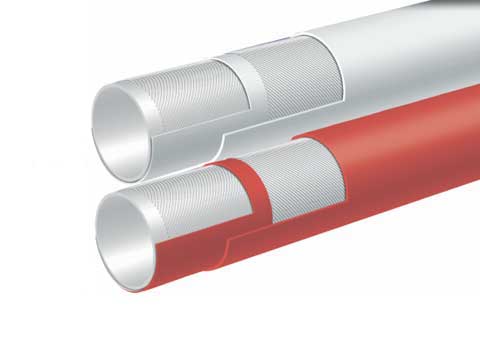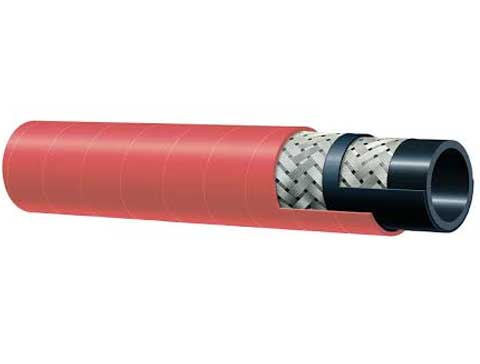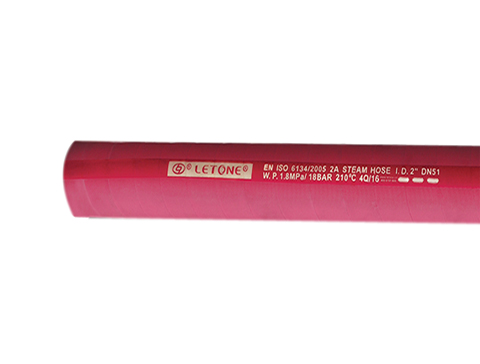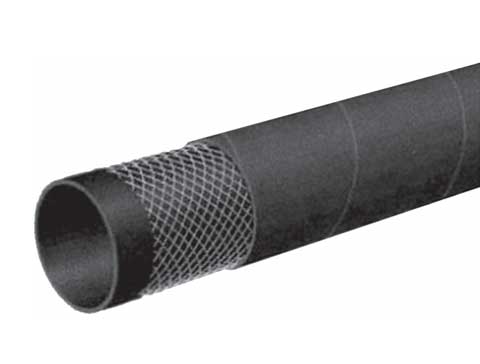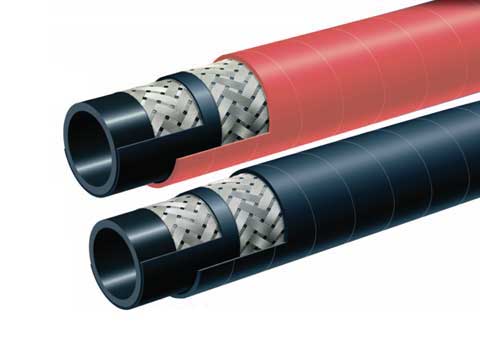The application scope of API well control hose is broad and encompasses all the fluid power systems that transport media, such as water, gas, sand and mud, from point of injection to point of discharge.
To ensure the reliability of the well system, it is important that the casing and tube strings are designed for capacity requirements. Barriers must maintain a flow path that is appropriate to the well's intended goals. Barrier planning and execution are integral parts of DW well design and drilling operations.
characteristics of API Well control hose

API Well Control Hose is a high-pressure hose assembly. The hose can be used for the hydraulic control of BOP for drilling and transmission of high-pressure & flammable fluids in the metallurgic industry. The hose is anti-static and anti-pressure. It also has a good-looking hose body.
The hose is available in different sizes and applications for the use in rotary drilling, cementing, work over services, borehole operation and other industrial applications. It can also deliver oil, water, mud, and other high-pressure mediums.
The hose can also be customized to meet the needs of the customer. It can be made from various materials, such as high-molecular polymer, stainless-steel armored type or braided stainless-steel wire jacket.
It has a flame-resistant cover to withstand minimum 1300degF(+700oC)flame temperature at working pressure for 5 minutes without failure.
The hose is designed to maintain the required operating pressure and to ensure the well control system continues to function in severe conditions. It is manufactured to API 16D and can be used for high pressure hydraulic application on BOP equipment.
precautions when storing API well control hose
Keeping hoses safe and in good condition is a must for well control operations. This includes storing the hoses in a clean and dry environment between 50degF and 70degF to prevent kinking, bending and corrosion.
A hose reel or rack can help keep the hoses neat and in good shape. This will also help prevent them from tangling together and causing abrasions or cuts.
It is important to choose the right hose for your application. This will ensure the hose can handle the pressure, temperature and application requirements for which it was designed.
The best way to find out is to consult an industry standard like the S.T.A.M.P.E.D. SAE J1273, a standard that outlines best practices for hydraulic hose assemblies, is a good place to start.
Besides selecting the hose and implementing the best possible storage and handling techniques, it is also imperative to follow the manufacturer's recommendations for storing the hoses correctly. This will protect the hoses from UV rays as well as extreme temperatures and moisture. Keeping the hoses cool and dry will also prolong their life, while preventing condensation and rusting. The best hose storage facilities will include temperature-controlled storage, with the hoses kept in horizontal barrels to prevent dust and dirt from depositing around the mouth of the barrels.
media transported by API well control hose
API well control hoses are used to transport oil, gas and mud under high pressure. Flexible hoses can be connected to the drill rig at various locations, depending on the application. For example, during workovers, surface interval drilling or well completion, the dimensions of the drilling vessel, the drilling rig and the installation may change. It is also used for choke and kill, and other applications that require a high pressure hose.
During air and natural gas drilling, well completion and workover operations, the hose shouldn't be exposed to pressurized gasses such as nitrogen for extended periods of time. This could damage the hose. In most cases, the hose is designed with safeguards and redundant components to avoid exposure to such gases. However, when it is intended or likely that the hose will be exposed to such gases during UBOs, it is best to use hoses made to meet API Spec 17B instead of API Spec 7K. The user can also consult the hose manufacturer to see if the operating temperature range of the hose is adjustable to meet the anticipated working conditions. In any case, the operating temperatures for the hose must not exceed the designated temperature range specified in clause 9.10.3.1 API Spec 7K.
 API Well Control Hose is a high-pressure hose assembly. The hose can be used for the hydraulic control of BOP for drilling and transmission of high-pressure & flammable fluids in the metallurgic industry. The hose is anti-static and anti-pressure. It also has a good-looking hose body.
The hose is available in different sizes and applications for the use in rotary drilling, cementing, work over services, borehole operation and other industrial applications. It can also deliver oil, water, mud, and other high-pressure mediums.
The hose can also be customized to meet the needs of the customer. It can be made from various materials, such as high-molecular polymer, stainless-steel armored type or braided stainless-steel wire jacket.
It has a flame-resistant cover to withstand minimum 1300degF(+700oC)flame temperature at working pressure for 5 minutes without failure.
The hose is designed to maintain the required operating pressure and to ensure the well control system continues to function in severe conditions. It is manufactured to API 16D and can be used for high pressure hydraulic application on BOP equipment.
API Well Control Hose is a high-pressure hose assembly. The hose can be used for the hydraulic control of BOP for drilling and transmission of high-pressure & flammable fluids in the metallurgic industry. The hose is anti-static and anti-pressure. It also has a good-looking hose body.
The hose is available in different sizes and applications for the use in rotary drilling, cementing, work over services, borehole operation and other industrial applications. It can also deliver oil, water, mud, and other high-pressure mediums.
The hose can also be customized to meet the needs of the customer. It can be made from various materials, such as high-molecular polymer, stainless-steel armored type or braided stainless-steel wire jacket.
It has a flame-resistant cover to withstand minimum 1300degF(+700oC)flame temperature at working pressure for 5 minutes without failure.
The hose is designed to maintain the required operating pressure and to ensure the well control system continues to function in severe conditions. It is manufactured to API 16D and can be used for high pressure hydraulic application on BOP equipment.

